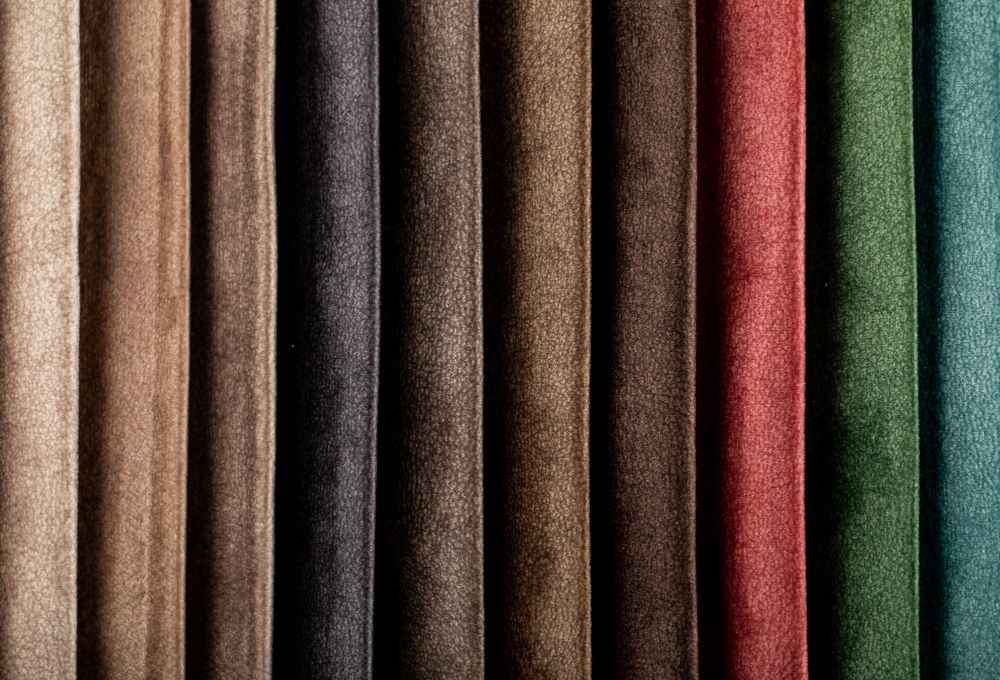
Upholstery can be an expensive hobby or business, especially when you’re just starting out. Between fabrics, foam, tools, and all the other bits and pieces you need, costs add up quickly. But here’s the good news: you don’t have to break the bank to create beautiful furniture pieces. With some smart shopping and a bit of planning, you can get quality supplies without emptying your wallet.
Buy Fabric in Bulk When Possible
One of the easiest ways to save money is buying fabric in larger quantities. Most suppliers offer better prices per metre when you buy more. If you have multiple projects lined up or know you’ll use a particular type of fabric regularly, buying a roll or several metres at once makes sense.
The price difference can be quite significant. Sometimes you might save 20-30% compared to buying small amounts repeatedly. Even if you don’t have immediate plans for all of it, having extra fabric on hand means you’re ready when inspiration strikes. Just make sure you have proper storage space to keep it in good condition.
Shop During Sales and Clearance Events
Timing your purchases around sales can lead to massive savings. Many fabric shops have seasonal sales, end-of-line clearances, and special promotions throughout the year. Black Friday, Boxing Day, and January sales are particularly good times to stock up.
Sign up for newsletters from your favourite suppliers. They often send early notifications about upcoming sales or exclusive discount codes to subscribers. Some shops also have clearance sections on their websites where you can find quality materials at reduced prices. These might be discontinued patterns or colours, but if they work for your project, why pay full price?
Consider Remnants and Offcuts
Remnants are smaller pieces of fabric left over from larger rolls. They’re usually sold at significantly reduced prices because shops want to clear them out. For smaller projects like cushions, chair seats, or ottoman tops, remnants can be perfect.
Don’t dismiss them just because they’re not full-length pieces. Check the measurements carefully, you might be surprised how much you can do with a well-sized remnant. Some suppliers have dedicated remnant sections where you can browse through various options. It’s a bit like treasure hunting, and you might find some really lovely fabrics at bargain prices.
Compare Prices Between Online and Physical Stores
Don’t assume that online is always cheaper or that local shops are overpriced. Prices vary quite a bit, and it’s worth spending time comparing. Online retailers often have lower overheads, which can translate to better prices. However, physical stores sometimes have in-store-only deals or can negotiate on larger orders.
Check multiple sources before making a purchase. Look at specialist upholstery suppliers, general fabric shops, and online marketplaces. Factor in delivery costs when comparing online prices, sometimes free shipping thresholds can influence whether a deal is actually worth it. Keep a list of reliable suppliers so you can quickly check who has the best price for what you need.
Join Upholstery Groups and Forums
Online communities can be goldmines for finding deals. Members often share information about sales, recommend affordable suppliers, and sometimes even sell their unused materials. Facebook groups dedicated to upholstery fabric and furniture restoration are particularly active in the UK.
These communities also provide valuable advice on which supplies are worth investing in and which ones you can save money on. Experienced upholsterers can tell you which budget-friendly alternatives work just as well as expensive options. Plus, you might find people selling tools or materials they no longer need at very reasonable prices.
Reuse and Recycle Materials When Appropriate
Not everything needs to be brand new. Old furniture often contains materials you can reuse. Horsehair, springs, and webbing in good condition can be cleaned and used again. This is not only economical but also more sustainable.
When stripping down furniture, assess what’s salvageable. Good quality foam that’s still firm might only need recovering. Wadding and calico can sometimes be reused if they’re not damaged. Obviously, you need to use judgement here – don’t compromise the quality of your finished piece just to save a few pounds. But being mindful about reusing materials can definitely reduce costs over time.
Buy Generic Tools and Supplies
While some specialized upholstery tools are worth the investment, many basic supplies don’t need to be brand-name or professional-grade. Things like scissors, measuring tapes, and basic hammers can be purchased from general hardware stores at lower prices.
Do your research on what actually makes a difference. A proper upholstery hammer might be worth the extra cost because it’s designed specifically for tacks and staples. But do you really need expensive fabric shears if you’re just starting out? Probably not. Start with decent quality generic tools and upgrade specific items as you develop your skills and understand what you really need.
Plan Your Projects Carefully
Poor planning leads to waste, and waste costs money. Before you start cutting into your fabric, measure everything twice. Make proper patterns and templates. Calculate exactly how much material you need, adding a reasonable margin for errors but not going overboard.
Sketch out your cutting plan to minimize fabric waste. Think about how you can arrange pattern pieces to use your fabric most efficiently. When you’re buying supplies, get what you actually need rather than guessing and potentially over-ordering. A bit of extra time spent on planning can save you from expensive mistakes and wasted materials.
Conclusion
Saving money on upholstery supplies doesn’t mean compromising on quality. It’s about being smart with your purchases, taking advantage of deals, and making informed decisions about where to spend and where to save. Whether you’re a hobbyist working on personal projects or running a small upholstery business, these strategies can help stretch your budget further.
Remember to build relationships with suppliers, stay informed about sales, and connect with other upholsterers who can share tips and resources. With some effort and planning, you can keep costs down while still creating beautiful work. If you’re looking for affordable options, you might want to explore online retailers that cater specifically to upholstery needs. For instance, Yorkshire Fabric Shop offers a range of upholstery fabrics and supplies for UK customers, making it convenient to compare prices and find materials that fit your budget.
FAQs
Q: How much can I realistically save by buying fabric in bulk?
You can typically save between 15-30% per metre when buying larger quantities. The exact savings depend on the supplier and the type of fabric, but bulk buying almost always works out cheaper than repeated small purchases.
Q: Are remnants good enough quality for furniture projects?
Yes, remnants are exactly the same quality as full rolls – they’re just smaller pieces. They’re perfect for smaller furniture items, cushions, or accent pieces. Always check the size matches your needs before buying.
Q: Should I buy cheaper foam to save money?
Foam is one area where quality matters quite a bit. Very cheap foam deteriorates quickly and won’t provide good support. Look for mid-range options that balance cost with durability. Sometimes spending a bit more on foam saves money long-term because it lasts longer.
Q: Is it worth travelling to physical stores or should I just shop online?
Both have advantages. Physical stores let you feel fabrics and see colours accurately, plus you might negotiate on large orders. Online shopping offers convenience and often better prices. Consider doing both – visit stores to see samples, then compare prices online.
Q: How can I tell if a sale price is actually a good deal?
Research normal prices beforehand so you know what items typically cost. Check if the sale item is something you actually need rather than buying just because it’s discounted. Look at the per-metre price rather than just the total, and factor in delivery costs for online purchases.




